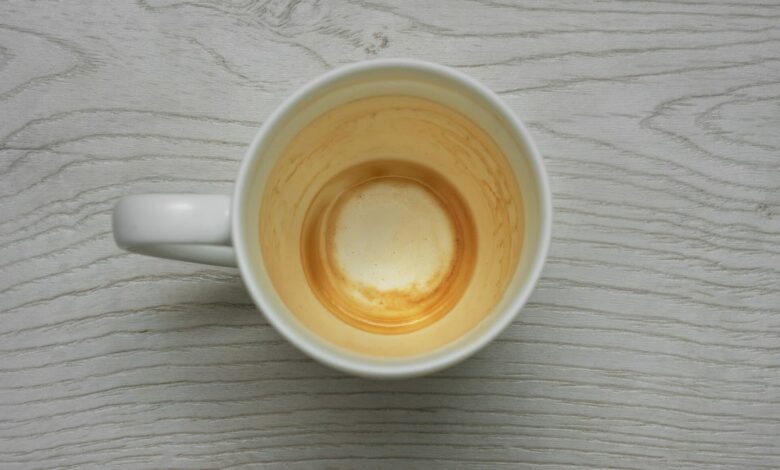Don’t let coffee stains ruin your mugs and cups


There’s a running joke in my family that revolves around my older sister’s absolute refusal to use a cup with stubborn coffee stains. Even though a cup has clearly been thoroughly washed, she refuses to drink any liquid from it, not even coffee. This makes for some funny inside jokes and inside jokes, but it got me thinking: why does coffee and tea stain all my cups, and why are the stains so hard to remove?
With these questions in mind, I fell down the rabbit hole of all things coffee stains. Here’s why coffee stains are so stubborn and five effective ways to combat them. For more information, read How to Remove Stains from Clothes , How to Clean Workout Clothes , and How to Clean Your Running Shoes .
Why does coffee stain your cups and mugs?
It’s so frustrating to run your cups and mugs through the dishwasher only to find that they’re still stained at the end of the cycle. Before you throw out that old cup, consider it an educational opportunity to explore why coffee is such a powerful stainer.
Coffee can stain cups and mugs due to the presence of compounds called tannins, a type of polyphenol naturally present in coffee beans. When coffee is brewed, tannins can adhere to the surface of cups or mugs, leading to brown stains over time.
How do you prevent coffee stains in your mugs?
To prevent stains, it is best to rinse a cup or mug immediately after use. This prevents stains from soaking into the cup or mug.

Additionally, coffee stains can be made worse by other factors, such as the temperature of the coffee, as heat speeds up chemical reactions. The tannin compounds in the hot coffee will bond more strongly to the material of the cup. Leaving the coffee in the cup or mug for an extended period of time will also make stains harder to remove, as the tannins will embed themselves into the surface of the cup as the coffee cools.
The porosity of the mug material can also affect the likelihood of staining. The more porous the material, the more susceptible it is to absorbing liquids and staining. Mugs or cups made of plastic, earthenware, and stoneware are generally considered more porous. I recommend purchasing high-quality stainless steel mugs or cups, as they are non-porous, making stubborn stains unlikely.
Regular cleaning of cups or mugs can help prevent coffee stains from setting into the material. Let’s take a look at the best methods for removing coffee stains.
5 Methods to Remove Coffee Stains for Good
The following five methods will help you remove coffee stains from your cups for good. (Or at least until the next time you drink coffee from them. In that case, you’ll need to repeat these steps.)
Method One
What do you need: Baking soda and water.
What to do: Make a paste by mixing equal parts baking soda and tap water. Apply the paste to the stained areas of the cup, scrub gently with a sponge or brush, and then rinse thoroughly.
Method Two
What do you need: White vinegar.
What to do: Soak the coffee stained cup in a mixture of white vinegar and water for a few hours. Then scrub the stains with a sponge or brush and then wash the cup with dish soap to remove the sour vinegar taste and pungent odor.
Method Three
What do you need: Lemon juice and salt.
What to do: Make a mixture of lemon juice and table salt. Gently rub this mixture over the stains and then rinse thoroughly. You will want to wash the cup or mug with dish soap and water afterwards to remove any remaining lemon taste or smell.
Method Four
What do you need: Baking soda and white vinegar.
What to do: Sprinkle a few teaspoons of baking soda into the cup or mug, carefully pour in white vinegar and let the mixture fizz. Once it has fizzed out, scrub the stains with a sponge or brush and rinse thoroughly.
Method Five
What do you need: Tablets for cleaning dentures.
What to do: Denture tablets clean mugs just as well as teeth. Fill the stained mug with warm water and add a denture cleaning tablet, making sure to add enough water to completely cover the coffee stains. Let it sit for a few hours, then scrub and rinse as with the other methods.
With everything, a little effort and time will go a long way in making your cups and mugs shine. These tips work on any drinkware material and can even be used for tea stains. Feel free to repeat any of the above processes as needed to remove the stains.
For more cleaning tips, you can also check out how often you should clean your makeup brushes and the best way to machine wash your sheets and bedding.




